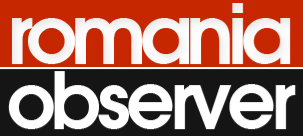In 2019, GDP per capita was 70% of the EU average (see Annex 15), up from 56.5% in 2015. Over the same period, the real growth rate was more than double that of the EU average. However, growth was demand-driven and boosted by expansionary fiscal policy, which resulted in growing current account deficits and macroeconomic imbalances. Regional disparities remain high, driven by labour productivity, investment and employment gaps between the capital and the rest of regions. In 2018, productivity was below the EU average (at 69%) and it varied extensively between regions, from 133% of the EU average in the Bucharest-Ilfov capital region to 39% in NordEst, the least developed region of the country. The less developed regions lack key assets such as transport infrastructure, highly skilled workers and have low levels of employment in high-technology sectors and R&D expenditure. In 2021, economic activity recovered the losses of the COVID-19 crisis. Real GDP grew at 5.9% due to strong private consumption (i.e. household spending) and investment. Despite weak interna?ional demand for Romanian goods and services and supply chain disruptions, exports continued growing, though not as fast as imports and the current account deficit widened further. Lockdown measures and rising inflation, especially rising energy prices, affected private consumption in the second half of 2021. Economic prospects are subdued. Due to a slowdown in late 2021 and aggravated by Russia’s invasion of Ukraine in 2022, real GDP is projected to just grow above 2% in 2022 and 2023, mainly supported by investments from several EU funds, including the Recovery and Resilience Facility (RRF). Exports and imports are set to grow at a lower pace due to supply-side bottlenecks and shortages, with the current account deficit to remain broadly unchanged. Prices are expected to rise, more markedly than before. After a mild increase in 2020, the inflation rate reached 4.1% in 2021 and is set to climb higher in 2022, as high energy prices will affect other goods and services, in line with global trends. Stronger expected wage dynamics could feed-back into inflation. The government has adopted emergency measures to cut energy bills by capping prices and reimbursing suppliers for the difference with real market prices. As reimbursements take long, smaller suppliers may face liquidity constraints. The fiscal deficit declined somewhat, but remains a concern. Past ad hoc pension and wage increases coupled with low public revenues , led to large deficits already before the crisis. In 2021 the deficit was 7.1% of GDP, down from 9.3% in 2020. Additional spending to fight the pandemic and offset increases in energy prices prevented a lower deficit, which is projected to decline somewhat by 2023 due to growth recovery and increased revenue collection, supported by the recovery and resilience plan (RRP). However, to go below 3% by 2024, in line with the June 2021 Council recommendation, will remain a challenge without corrective measures. The large structural primary deficit set for 2023, the increasing government debt, its sensitivity to macro-fiscal shocks, and the uncertainty around baseline debt projections point to substantial and moderate fiscal challenges over the medium and long term respectively. Fiscal deficits also contributed to a negative current account balance and higher public debt, with costlier financing. Romania currently has the highest bond yield spread in the EU and its debt is just at investment-grade level. The labour market performed well despite the COVID-19 pandemic, but key challenges remain. The employment rate continued to grow, from 65.2% in 2020 to 67.1% in 2021. SURE supporting measures are also a contributing factor. Still, employment rates of the young and older people, Roma, women and the lowskilled remain far below the EU averages, while the disability employment gap increased to 30.4pps. The gender employment gap is high and has been widening.The unemployment rate fell to 5.6% in 2021, down from 6.1% in 2020 but is still above pre-crisis levels. The Commission’s 2022 Spring Forecast estimates that it will decrease to 5.5% in 2022 and to 5.3% in 2023, on the back of a subdued growth. Wage growth is set to rebound but poverty and in-work poverty remain a challenge. The pandemic caused wage growth to level out. Yet in 2021, nominal and real wage growth rebounded to 5.7% and 0.3% respectively. In early 2021, the government raised the minimum gross salary to RON 2 300 (EUR 466) and approved an increase to RON 2 550 (EUR 515) as from January 2022. On the other hand, public wages were frozen in 2021, after increasing 37.5% over the past 4 years. Stronger growth is forecast for 2022 in overall nominal wages of up to 8.3%, but due to high inflation is set to be negative in real terms -1.1% (2022 Spring Forecast). In-work poverty remains high, driven by occasional or part-time work, selfemployment and informality (i.e. undeclared work). The share of people at risk of poverty remains high. (Full report on :https://ec.europa.eu/info/system/files/2022-european-semester-country-report-romania_en.pdf)

